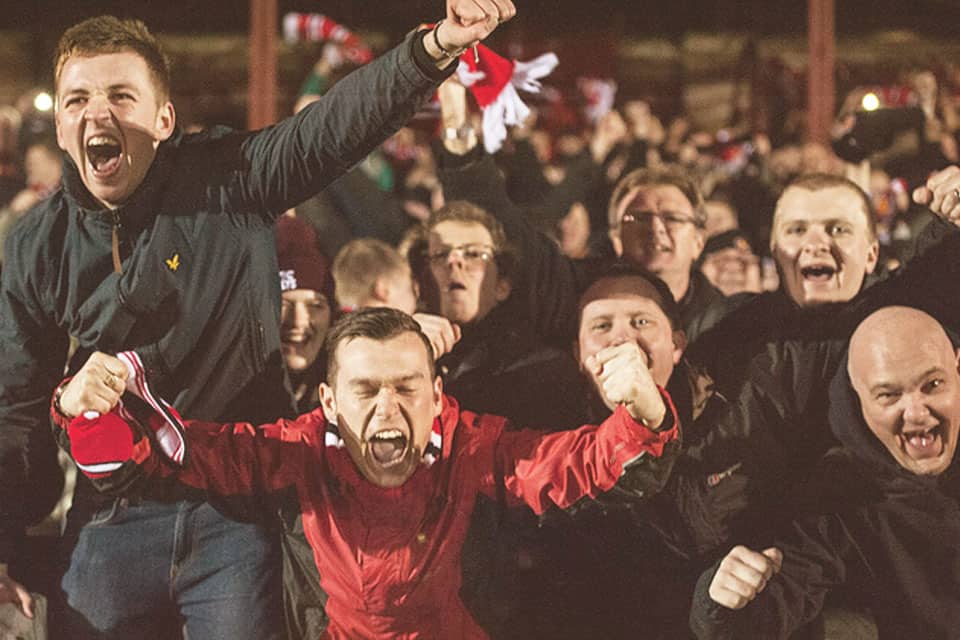ModifiedCFCvFCUM_NPLPD_2013/14 courtesy of ©Matthew Wilkinson, Flickr 2014.
*This is the final installment in a two-part series on pricing in the Premier League. After looking at the League through the 5Cs of pricing, Tony Hodgson, Managing Director of Pricing Solutions UK, discusses why Clubs may still need to rethink pricing strategy to be successful in the long-run.
In the last edition it was clear: Premier League football clubs are in a strong position to maintain price increases. They have a loyal customer who is unlikely to move to another brand. They’re generally running at full capacity and their own costs continue to rise. Lastly, historic price increases have successfully been made without any impact on volume, regardless of the outside economic conditions.
However, still there is a sense that a tipping point may about to be reached. Whilst clubs have been able to sustain ticket price increases based on solid pricing fundamentals so far, the near future might well bring the need for a rethink.
Downward pricing pressure from other factors is building
Technology is playing its part, with the rise of online streaming sites allowing fans to watch any match from a number of devices. Whilst the experience is not the same as being in the grounds, there is no longer the dilemma of not being able to watch the game if you can’t afford a ticket.
Other fans are starting to forgo Premier League grounds and get their fix of live football elsewhere on the continent; for example saving up an equivalent amount of money and traveling to watch Bundesliga matches in Germany for a new experience.
There’s also the possibility of other sports becoming credible competition. Rugby Union attendances have been growing consistently over the past 10 years and the NFL is looking at establishing a London franchise after repeatedly attracting 80,000 people to its annual games at Wembley.
Further down the road lies the issue of age. Match day fans in the mid-1970s were mostly aged between 15-25 years. These days the age profile is more likely to be over 40: i.e. those who can afford tickets or have been going their entire lives. Currently, ticket prices are squeezing out families and younger people – the fans of the future.
In Germany, where attendance levels are catching up with those of the English Premier League – but tickets are a fraction of the price – they take a longer-term view of pricing. Carsten Cramer, Dortmund’s commercial director told BBC Sport:
“If we were to ask for prices like this [in the Premier League]
we’d lose the people – one of the most important assets
for our club. We have to care for them”
English clubs may soon have to adopt a similar approach and look to the longer-term value of their customers as their core fan base dwindles due to age and new fans accustomed to watching matches away from the stands.
How clubs can rethink their ticket prices and keep revenues high?
We suggested in Part 1 that segmentation is a key to good pricing strategy, and although clubs have had some success here, we believe they could take it a step further. For example:
- Season tickets are discounted in return for buying up front for the year, with an assumption that the main appeal is to save money. Yet when we complete pricing research we tease out what product attributes customers value most. In this case it may be that customers value the ability to sit next to friends, access to cup game tickets, club shop discounts or the kudos of being seen as a loyal fan. Understanding these underlying value drivers might lead to designing alternative season ticket packages, such as cheaper options for younger fans (say, with no guarantee of a specific seat), or more expensive prices for those who value and can afford extra benefits.
- Experiment with processes to help identify, look after and segment the regular match day ticket buyer. Then, use membership schemes more widely for these fans. These would ensure that local fans, especially younger ones, have access to games at reasonable prices, rather than paying the higher tariffs typically aimed at football tourists.
Ultimately, in the short term we believe ticket prices could feasibly continue to rise, due to the 5 Cs of Pricing. However, in the long term these increases prices in football may not be sustainable, brought to an end by changing market forces. This means clubs need to start planning for this eventuality and focus on how to maximise the lifetime value of their fans.
Article written by Tony Hodgson, Managing Director, Pricing Solutions UK. Tony is headquartered in Pricing Solutions’ London Office. Pricing Solutions is an international pricing strategy consultancy dedicated to helping clients achieve world class pricing competency.





